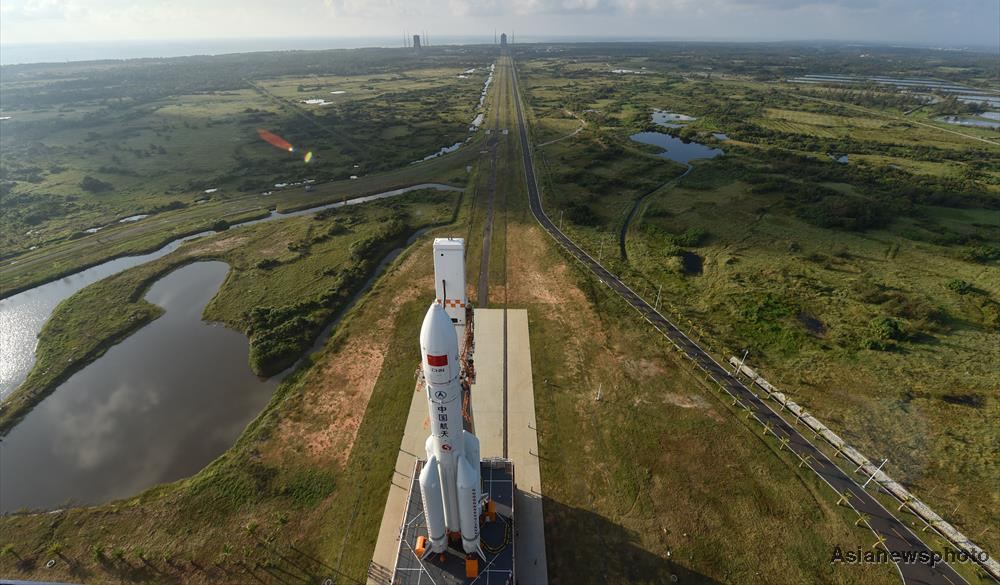Every year, the
Department of National Intelligence
(DNI) releases its
Worldwide Threat Assessment of the US Intelligence Community
. This annual report contains the intelligence community's assessment of potential threats to US national security and makes recommendations accordingly. In recent years, these threats have included the development and proliferation of weapons, regional wars, economic trends, terrorism, cyberterrorism, etc.
This year's assessment, which was released on
February 8th, 2018
, was certainly a mixed bag of warnings. Among the many potential threats to national security, the authors emphasized the many recent developments taking place in space. According to their assessment, the expansion of the global space industry, growing cooperation between the private and public sector, and the growth of various states in space, could constitute a threat to US national security.
Naturally, the two chief actors that are singled out were China and Russia. As they indicate, these countries will be leading the pack in the coming years when it comes to expanding space-based reconnaissance, communications and navigation systems. This will not only enable their abilities (and those of their allies) when it comes to space-based research, but will have military applications as well.
[caption id="attachment_138245" align="aligncenter" width="580"]
The second flight of the Long March 5 lifting off from Wenchang on July 2nd, 2017. Credit: CNS
[/caption]
As they state in the section of the report titled "
Space and Counhttps://www.dni.gov/files/documents/Newsroom/Testimonies/2018-ATA---Unclassified-SSCI.pdfterspace
":
A key aspect of this development is outlined in the section titled "
Emerging and Disruptive Technology
," which addresses everything from the development of AI and internet technologies to additive manufacturing and advanced materials. In short, it not just the development of new rockets and spacecraft that are at issue here, but the benefits brought about by cheaper and lighter materials, more rapid information sharing and production.
"Emerging technology and new applications of existing technology will also allow our adversaries to more readily develop weapon systems that can strike farther, faster, and harder and challenge the United States in all warfare domains,
including space,
" they write.
[caption id="attachment_130983" align="aligncenter" width="580"]
Artist's illustration of China's 8-ton Tiangong-1 space station, which is expected to fall to Earth in late 2017. Credit: CMSE
[/caption]
Specifically, anti-satellite (ASAT) weapons are addressed as the major threat. Such technologies, according to the report, have the potential to reduce US and allied military effectiveness by disrupting global communications, navigation and coordination between nations and armies. These technologies could be destructive, in the form of anti-satellite missiles, but also nondestructive - i.e. electromagnetic pulse (EMP) devices. As they indicate:
The authors further anticipate that Russian and Chinese destructive ASAT technology could reach operational capacity within a few years time. To this end, they cite recent changes in the People's Liberation Army (PLA), which include the formation of military units that have training in counter-space operations and the development of ground-launched ASAT missiles.
While they are not certain about Russia's capability to wage ASAT warfare, they venture that similar developments are taking place. Another area of focus is the development of directed-energy weapons for the purpose of blinding or damaging space-based optical sensors. This technology is similar to what the US investigated decades ago for the sake of strategic missile defense - aka. the
Strategic Defense Initiative
(SDI).
[caption id="attachment_131892" align="aligncenter" width="580"]
An artist's concept of a Space Laser Satellite Defense System. Credit: USAF
[/caption]
While these weapons would not be used to blow up satellites in the conventional sense, they would be capable of blinding or damaging sensitive space-based optical sensors. On top of that, the report cites how Russia and China continue to conduct on-orbit activities and launching satellites that are deemed "experimental". A good example of this was a
recent proposal
made by researchers from the Information and Navigation College at China's Air Force Engineering University.
The study which detailed their findings called for the deployment of a high-powered pulsed ablative laser that could be used to break up space junk. While the authors admit that such technology can have peaceful applications - ranging from satellite inspection, refueling and repair - they could also be used against other spacecraft. While the United States has been researching the technology for decades, China and Russia's growing presence in space threatens to tilt this balance of power.
Moreover, there are the loopholes in the existing legal framework - as outlined in the
Outer Space Treaty
- which the authors believe China and Russia are intent on exploiting:
[caption id="attachment_138264" align="aligncenter" width="580"]
Artist's impression of a laser removing orbital debris, based on NASA pictures. Credit: Fulvio314/NASA/Wikipedia Commons
[/caption]
For example, the Outer Space Treaty bars signatories from placing weapons of mass destruction in orbit of Earth, on the Moon, on any other celestial body, or in outer space in general. By definition, this referred to nuclear devices, but does not extend to conventional weapons in orbit. This leaves room for antisatellite platforms or other conventional space-based weapons that could constitute a major threat.
Beyond China and Russia, the report also indicates that Iran's growing capabilities in rocketry and missile technology could pose a threat down the road. As with the American and Russian space programs, developments in space rocketry and ICBMs are seen as being complimentary to each other:
All told, the report makes some rather predictable assessments. Given China and Russia's growing power in space, it is only natural that the DNI would see this as a potential threat. However, that does not mean that one should assume an alarmist attitude. When it comes to assessing threats, points are awarded for considering every contingency. But if history has taught us anything, it's that assessment and realization are two very different things.
Remember Sputnik? The lesson there was clear. Don't panic!
Further Reading: DNI
 Universe Today
Universe Today
